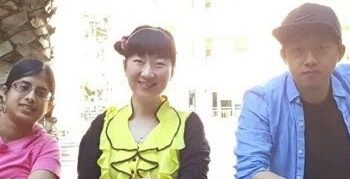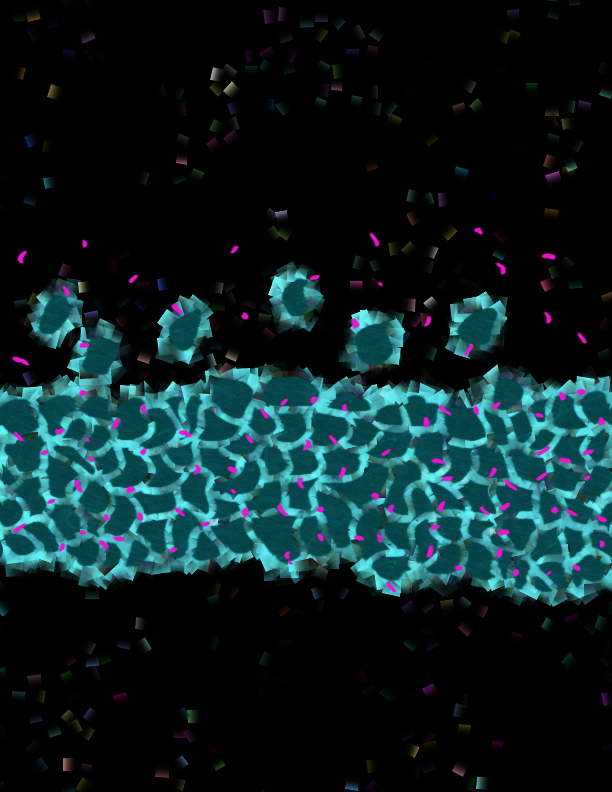Structures called primary cilia – which act like TV antennas for cells to detect signals – are present in fewer numbers in mice born with Fragile X syndrome, according to researchers from The University of Texas Health Science Center at San Antonio (UT Health San Antonio). Study results were published July 30 in the journal Stem Cell Reports.
Fragile X syndrome is a genetic disorder often accompanied by mild to severe intellectual disability. Autism spectrum disorders frequently occur in the affected children. Understanding the role of primary cilia deficits in Fragile X syndrome and autism and developing novel therapeutics to increase their numbers could lead to reversing these neurodevelopmental disorders, said study senior author Hye Young Lee, PhD, of UT Health San Antonio.
The research team focused on primary cilia located in a brain structure called the dentate gyrus. It is part of the hippocampus, a learning and memory command center. The reduction of primary cilia was specifically noted in the dentate gyrus, Dr. Lee and her colleagues found.
The dentate gyrus is one of two brain structures that contain neuronal stem cells, she said. The dentate gyrus serves as a nursery for newborn neurons, which depend on the primary cilia to enable their maturation.
Primary cilia have not previously been linked to Fragile X syndrome, Dr. Lee said.
“If we get to know how the primary cilia work in the newborn neuron and how they contribute to Fragile X syndrome, the next step would be to promote them,” Dr. Lee said.
“There are drugs to do that, and they could be potential therapies for Fragile X syndrome and other neurodevelopmental disorders, because there are multiple studies showing that neurodevelopmental disorders and autism can be reversed in adults,” Dr. Lee said.
Dr. Lee is an assistant professor in the Department of Cellular and Integrative Physiology in UT Health San Antonio’s Joe R. and Teresa Lozano Long School of Medicine. Her laboratory is supported by a Rising STARs Award from The University of Texas System, a Pilot Award from the Simons Foundation Autism Research Initiative, and a Pilot Award from the Max and Minnie Tomerlin Voelcker Fund.
Primary Ciliary Deficits in the Dentate Gyrus of Fragile X Syndrome
Bumwhee Lee, PhD; Shree Panda, BS; and Hye Young Lee, PhD
First published: July 30, 2020, Stem Cell Reports
https://doi.org/10.1016/j.stemcr.2020.07.001

The Long School of Medicine at The University of Texas Health Science Center at San Antonio is named for Texas philanthropists Joe R. and Teresa Lozano Long. The school is the largest educator of physicians in South Texas, many of whom remain in San Antonio and the region to practice medicine. The school teaches more than 900 students and trains 800 residents each year. As a beacon of multicultural sensitivity, the school annually exceeds the national medical school average of Hispanic students enrolled. The school’s clinical practice is the largest multidisciplinary medical group in South Texas with 850 physicians in more than 100 specialties. The school has a highly productive research enterprise where world leaders in Alzheimer’s disease, diabetes, cancer, aging, heart disease, kidney disease and many other fields are translating molecular discoveries into new therapies. The Long School of Medicine is home to a National Cancer Institute-designated cancer center known for prolific clinical trials and drug development programs, as well as a world-renowned center for aging and related diseases.
The University of Texas Health Science Center at San Antonio, also referred to as UT Health San Antonio, is one of the country’s leading health sciences universities and is designated as a Hispanic-Serving Institution by the U.S. Department of Education. With missions of teaching, research, patient care and community engagement, its schools of medicine, nursing, dentistry, health professions and graduate biomedical sciences have graduated more than 37,000 alumni who are leading change, advancing their fields, and renewing hope for patients and their families throughout South Texas and the world. To learn about the many ways “We make lives better®,” visit www.uthscsa.edu.
Stay connected with The University of Texas Health Science Center at San Antonio on Facebook, Twitter, LinkedIn, Instagram and YouTube.


